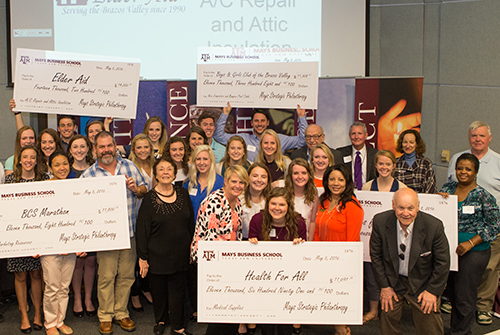 Philanthropy Prep
Philanthropy Prep
Undergraduate students at Mays Business School can gain a first-hand look into the world of nonprofit work, thanks to a new course called Strategic Philanthropy.
As the first of its kind to be offered at an SEC school, the course enables students to experience the grant-making process from a foundation’s perspective.
“No matter what role you have in a company, you will encounter nonprofits,” said course instructor Kyle Gammenthaler ’11. “But without understanding how they work, you’re just a neutral third-party observer. It’s important that students learn the unique rules of the nonprofit world.”
During the first course last spring, students allocated $50,000 in grant money donated by The Philanthropy Lab to five Brazos Valley nonprofit organizations after spending weeks learning about the organizations vying for funds and conducting site visits. Funds were ultimately awarded to BCS Marathon, Boys and Girls Club of Brazos Valley, Elder Aid, Health For All and Voices for Children.
A $140,000 gift to the Texas A&M Foundation from Jennifer and Wil VanLoh will cover grant money and operating expenses for the next two courses.
“As our daughter shared what she learned in the course, my wife and I saw so many of the giving principals we’ve tried to impart to our children being reinforced,” Wil said. “This class teaches students to be good stewards of the financial resources they are entrusted with, and it benefits nonprofits and charities by helping them better serve their constituents.”